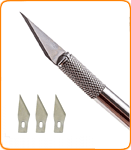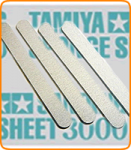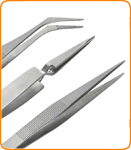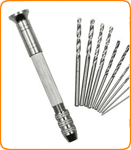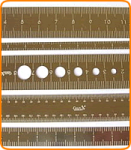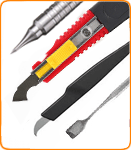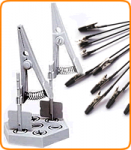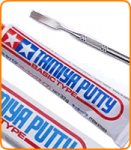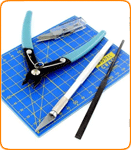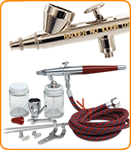Model Factory Hiro K850 1/12 Alfa Romeo Giulia TZ2 Ver.B 1966 Nurburgring 1000km/1966 Sebring 12h
K850 - Ver.B :1966 Nurburgring 1000km / 1966 Sebring 12hours
1966 Nurburgring 1000km
#75 R.Bussinello / "Geki"
#76 A.de Adamich / T.Zeccoli
#77 L.Bianchi / H.Schultze
1966 Sebring 12hours
#61 T.Zeccoli / "Geki"
#62 L.Bianchi / B.Consten
#63 "Geki" / G.Andrey
The TZ2, officially known as the Giulia Tubolare Zagato 2, was the second model of the TZ series. Its name reflected its features - components from the Alfa Romeo Giulia series, a tubular frame and bodywork design and built by coachbuilding company Zagato. ''Giulia'' stems from the Giulia series that started production in 1962, differentiating it from its predecessor series: the Alfa Romeo Giulietta (''Giulia'' being the older sister of ''Giulietta'') which started production in 1954.
During the 1950s and 1960s, Alfa Romeo would have coachbuilders such as Zagato and Bertone build bodies to modify their street models into racing cars. It was a period of time when the line between a road-going car and a race car was still blurred. It was during this era that Zagato designed the Giulia Tubolare Zagato 1 (TZ1). First produced in 1963, it used the street car Alfa Romeo Giulia as a base, a tubular frame chassis and a Zagato designed bodywork made of aluminum. These features along with an independent suspension system, an innovated design at the time, resulted in a lightweight vehicle that performed liked a race-winning sports car. Around a hundred units were produced.
In 1965 the TZ1 was further upgraded into the TZ2 - while the chassis design remained highly unchanged to its predecessor, the TZ2 featured a FRP body that allowed for further weight reduction, and the engine was tuned to be more race focused. The GT class regulations at the time required 50 cars to be produced for homologation, but only 12 TZ2s were produced so the car was only able to participate as a prototype for the works team for a year and a half. The Alfa Romeo team would later replace the TZ2 with the Tipo33 for prototype races, and the Giulia Sprint GTA for touring car races.
Despite the short period in which it performed, the TZ2 still stands today as a famous racing car that attracts the attention of many car enthusiasts thanks to its innovation, beautiful styling and rarity.
- a 1/12 scale kit based on the TZ2's that raced at the 1966 Targa Florio, and the make(s) that raced at Nurburgring 1000km and 12 Hours of Sebring in the same year.
- a full detailed, multi-material kit featuring white metal, resin, etching, turned parts, rubber tires, silk screen decals and various cords allowing for maximum representation of the original vehicle.
- aluminum turned parts used for wheel rim, light rim and dashboard meters.
- front cowl and doors can open and close post construction, allowing full view of the detailed interior after completion.
- decals printed by Cartograf.
1966 Nurburgring 1000km
#75 R.Bussinello / "Geki"
#76 A.de Adamich / T.Zeccoli
#77 L.Bianchi / H.Schultze
1966 Sebring 12hours
#61 T.Zeccoli / "Geki"
#62 L.Bianchi / B.Consten
#63 "Geki" / G.Andrey
The TZ2, officially known as the Giulia Tubolare Zagato 2, was the second model of the TZ series. Its name reflected its features - components from the Alfa Romeo Giulia series, a tubular frame and bodywork design and built by coachbuilding company Zagato. ''Giulia'' stems from the Giulia series that started production in 1962, differentiating it from its predecessor series: the Alfa Romeo Giulietta (''Giulia'' being the older sister of ''Giulietta'') which started production in 1954.
During the 1950s and 1960s, Alfa Romeo would have coachbuilders such as Zagato and Bertone build bodies to modify their street models into racing cars. It was a period of time when the line between a road-going car and a race car was still blurred. It was during this era that Zagato designed the Giulia Tubolare Zagato 1 (TZ1). First produced in 1963, it used the street car Alfa Romeo Giulia as a base, a tubular frame chassis and a Zagato designed bodywork made of aluminum. These features along with an independent suspension system, an innovated design at the time, resulted in a lightweight vehicle that performed liked a race-winning sports car. Around a hundred units were produced.
In 1965 the TZ1 was further upgraded into the TZ2 - while the chassis design remained highly unchanged to its predecessor, the TZ2 featured a FRP body that allowed for further weight reduction, and the engine was tuned to be more race focused. The GT class regulations at the time required 50 cars to be produced for homologation, but only 12 TZ2s were produced so the car was only able to participate as a prototype for the works team for a year and a half. The Alfa Romeo team would later replace the TZ2 with the Tipo33 for prototype races, and the Giulia Sprint GTA for touring car races.
Despite the short period in which it performed, the TZ2 still stands today as a famous racing car that attracts the attention of many car enthusiasts thanks to its innovation, beautiful styling and rarity.
- a 1/12 scale kit based on the TZ2's that raced at the 1966 Targa Florio, and the make(s) that raced at Nurburgring 1000km and 12 Hours of Sebring in the same year.
- a full detailed, multi-material kit featuring white metal, resin, etching, turned parts, rubber tires, silk screen decals and various cords allowing for maximum representation of the original vehicle.
- aluminum turned parts used for wheel rim, light rim and dashboard meters.
- front cowl and doors can open and close post construction, allowing full view of the detailed interior after completion.
- decals printed by Cartograf.
| General Info | |
| Scale | 1/12 |
| Type | Scale Model Kit |
| Subtype | Racing Car |
- Stock: In Stock
- Reward Points: 1175
- SKU: MFH-K850
- 2pcs in Stock

Model Factory Hiro
MRP: US$924.27 Save: US$160.52
17% OFF
US$763.75
(excl. Tax)
"In-Stock" Really Means It
Combine Shipping & Save
SAME or Next day shipping*
Pay in 4 interest-free payments of US$190.94. Learn more
There are no reviews
Maybe you can help? Many users will be grateful to you. And so are we.






















